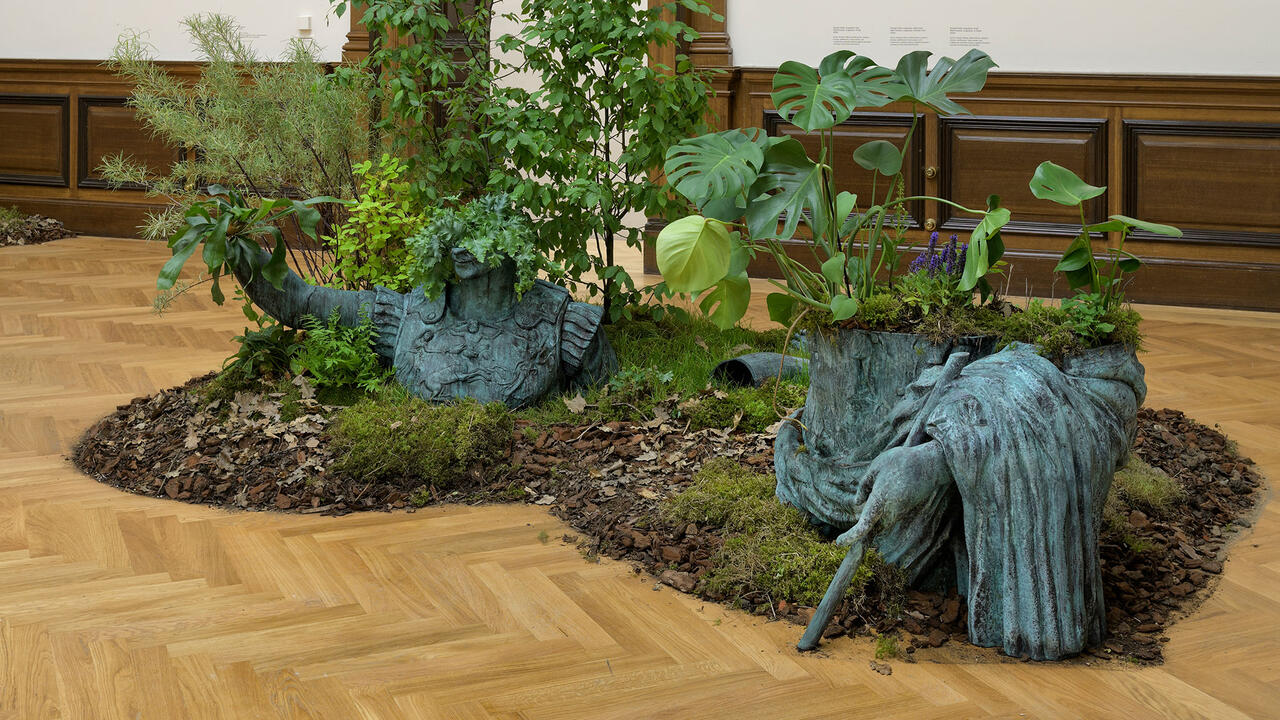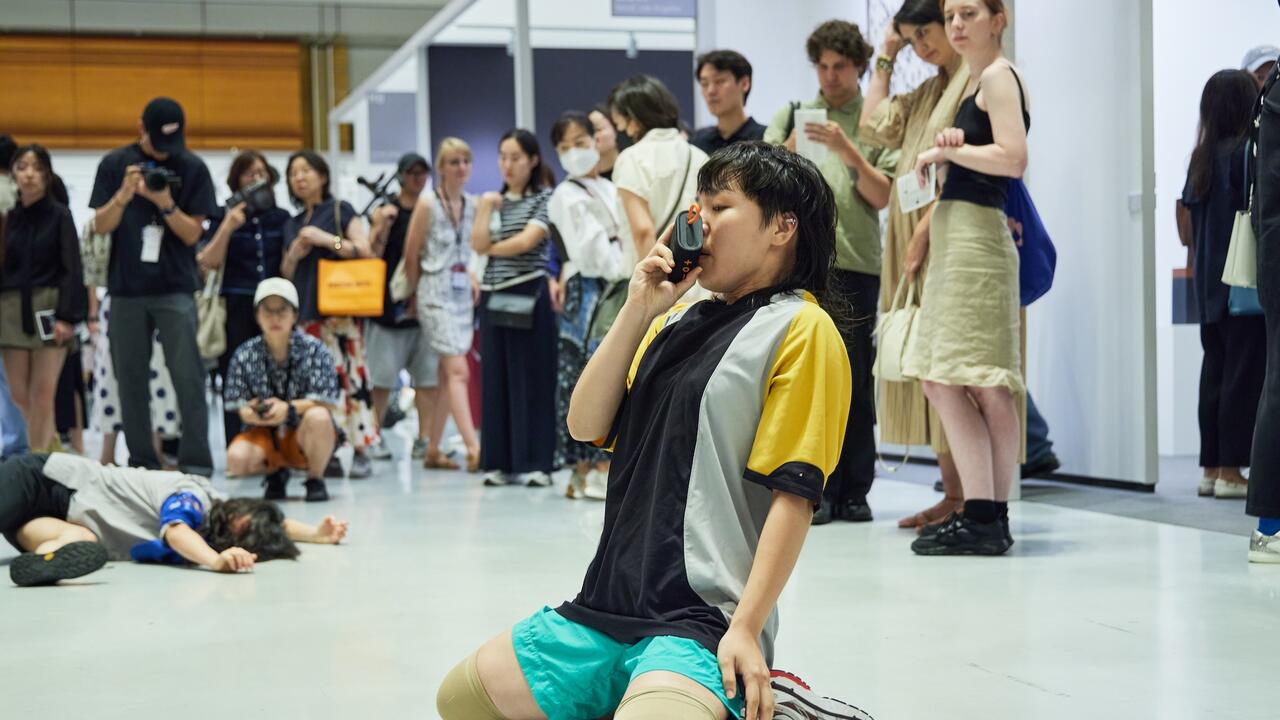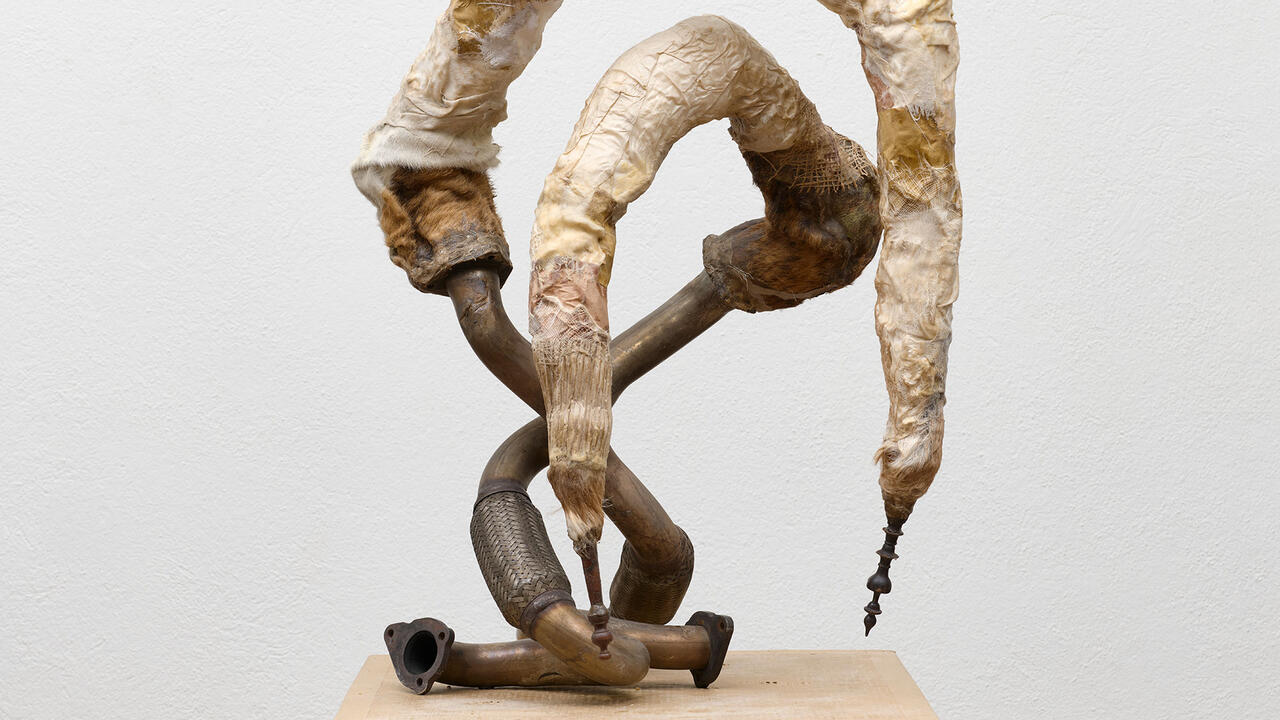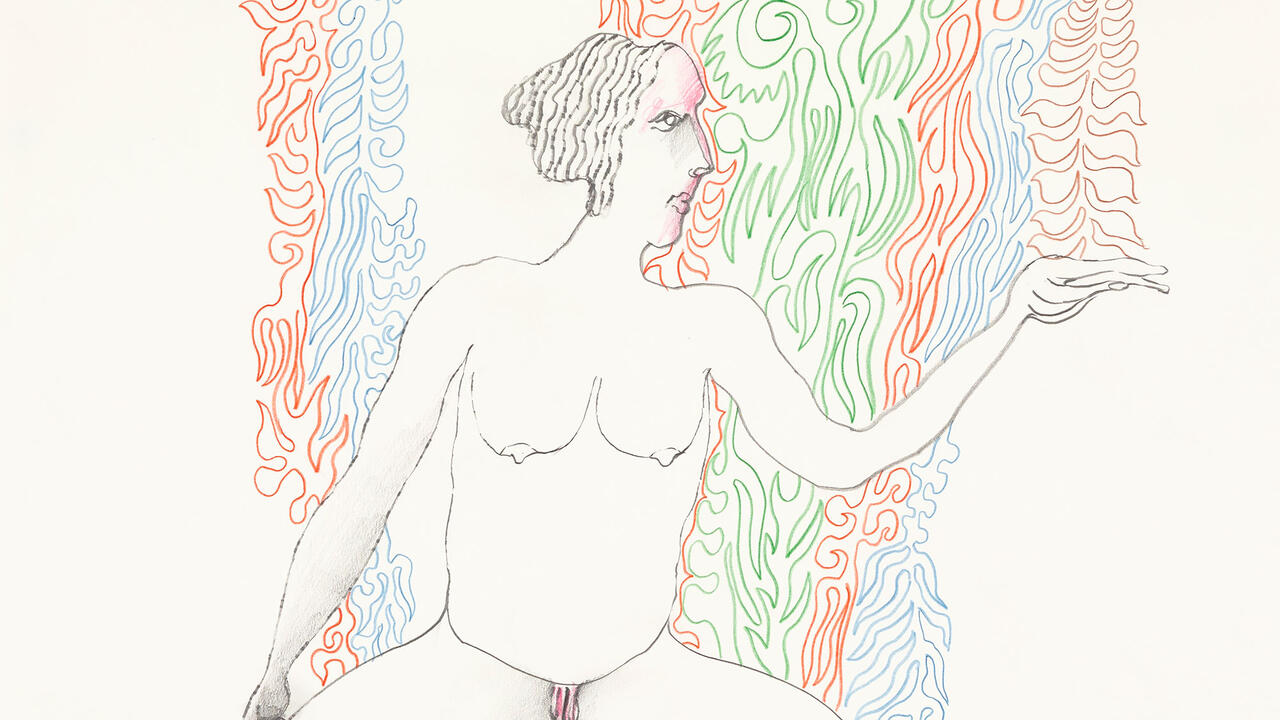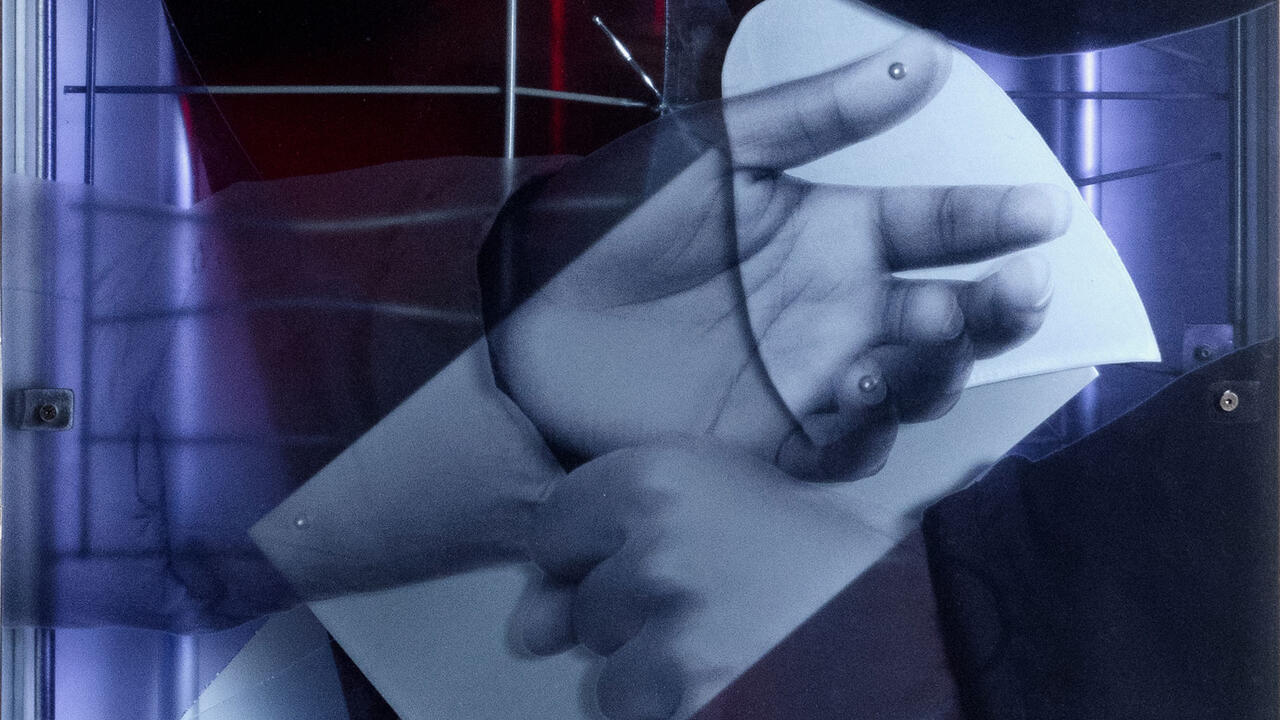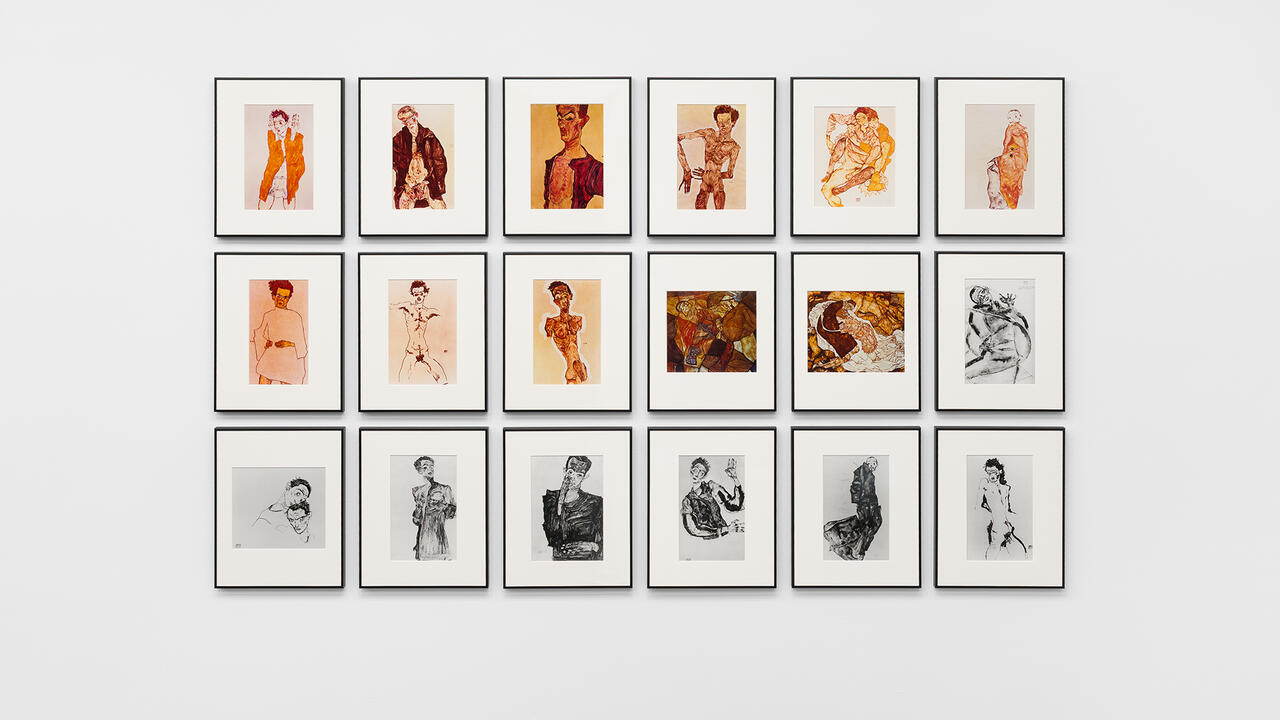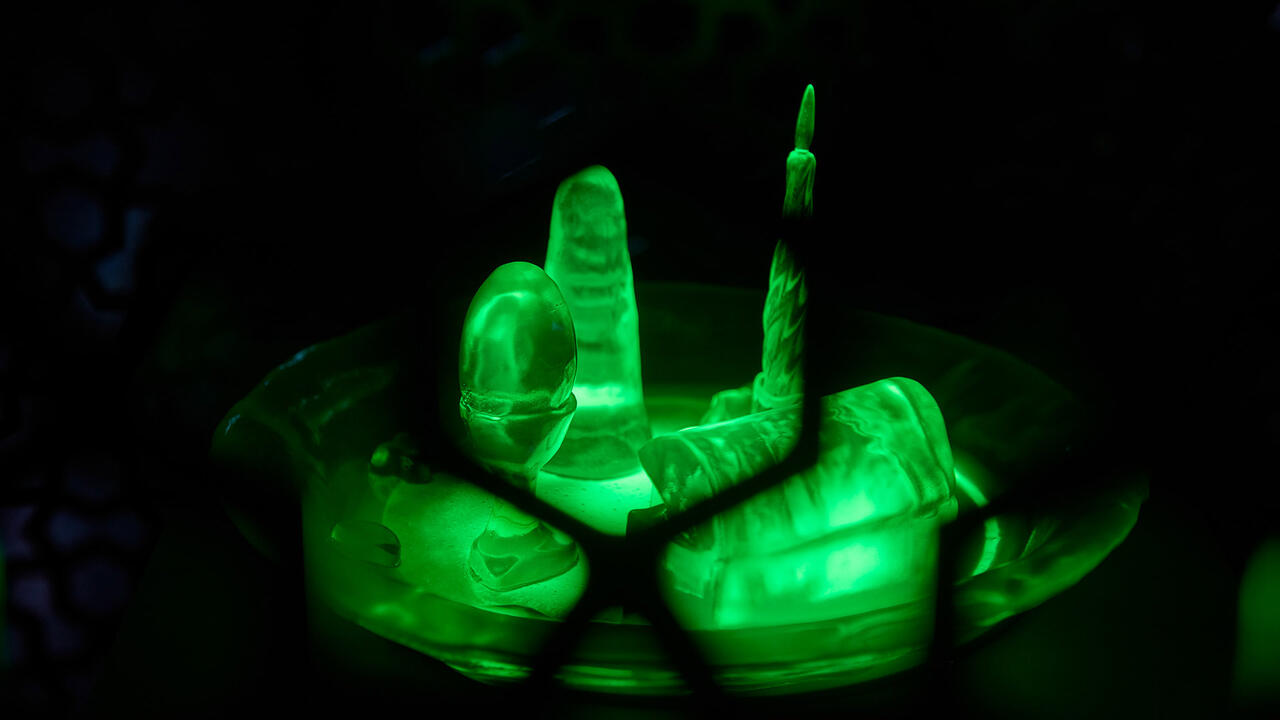Gabriel Chaile Honours His Origins
At Tabakalera, San Sebastián, an expansive show dedicated to the artist alludes to the broader challenges of mid-career retrospectives
At Tabakalera, San Sebastián, an expansive show dedicated to the artist alludes to the broader challenges of mid-career retrospectives

‘Contemplating Is How We Have Been Changing’, Tabakalera’s survey of Argentine artist Gabriel Chaile, deftly shows his ability to transform humble materials into vessels of ancestral knowledge and familial intimacy. The exhibition includes several of Chaile’s characteristic anthropomorphic and zoomorphic adobe sculptures, yet it also features a selection of impressive earlier works, and hints at new forays into film narrative and mythmaking.
Chaile’s charismatic adobe works – made by packing a reddish mixture of earth, straw and clay around metal armatures – often double as pot-bellied community ovens. ¿Por qué has corrido tan lejos? (Why Have You Run So Far?, 2024) takes the form of a four-metre-high bird vessel with a towering chimney neck. Irene, Isabel (2024), named after the artist’s mother, simultaneously appears like a cloaked bird torso and a forlorn face, with breasts that might be eyes. A brown hen’s egg is perched inside a nook that evokes a teardrop or a vulva-pupil. Both sculptures fuse personal ancestry with cultural genealogy, often depicting Chaile’s family members while rekindling La Candelaria pottery traditions from northwest Argentina. For the artist, the curve of a brow or the shape of a nose – like the lip of a vessel or the foot of an urn – represent an inheritance that has endured centuries of ethnic persecution and the relegation of cultural heritage to ethnographic artifact.

The egg as an emblem of origin is a motif frequently highlighted in Chaile’s earlier works, shown here for the first time outside Argentina. One sits atop a brick in Parábola (Parabola, 2013). A piece of cardboard lies next to it, a plumb bob hangs nearby, whilst an arc of rebar loops out and back from the wall. The work is a potent inheritor of the arte povera tradition, yet also speaks more literally to poverty itself: the single brick serves as an embryonic abode; the cardboard provides a makeshift bed; the egg is simple nourishment. Elsewhere, Salir del surco al labrar la tierra (Leaving the Furrow When Tilling the Soil, 2014) features ranks of brass rods and a lightbulb suspended above a grid of 49 bricks, atop each of which balances an egg, as if some mystical energy generator.

In the opposite wing of the exhibition, Selva tucumana (Tucumán Jungle, 2024) references Chaile’s enchanted attempts to animate the world. A cinema-screen-sized mural serves as the backdrop for suspended metal animal outlines that seem to frolic in a forest scene. Despite the work’s mise-en-scène and visual effects being entirely composed of adobe, wood, metal and charcoal, Chaile’s intention – the exhibition guide confirms – is that it aspires to be a movie about baby tapirs falling from the sky and becoming human as they discover fire. While Chaile’s faith in the power of modest materials and the imagination is unwavering, this project represents an assured plot twist in his career, introducing a new mythological narrative dimension to his practice.
All the more incongruous, then, is the curatorial decision to devote a large gallery to an installation by artist Tomás Bargão Henriques, who manages Chaile’s Lisbon studio. Comprising suspended, graffiti-covered corrugated roofing sheets, Untitled (2024) is accompanied by an apparently unrelated text in the exhibition guide about analogue photography.

The ‘contemplating’ and ‘changing’ of the exhibition title might allude to the broader challenges of mid-career retrospectives: how to stitch together an artist’s most celebrated achievements with earlier works, while also hinting at future evolution. Despite this exhibition admirably capturing the transformative energy of Chaile’s art, the inclusion of what is presumably meant to signal his solidarity with fellow collaborators in Portugal feels like an intrusion into what is otherwise an irresistible artistic narrative.
Gabriel Chaile’s ‘Contemplating is How We Have Been Changing’ is on view at Tabakalera, San Sebastián, until 2 February
Main image: Gabriel Chaile, El principio de la belleza está en el fin de la misma, (The Principle of Beauty is at the End of It) 2011/2024, oil on board with gold leaf, metal, light, 10 x 2,3 x 1 m. Courtesy: the artist and Tabakalera





